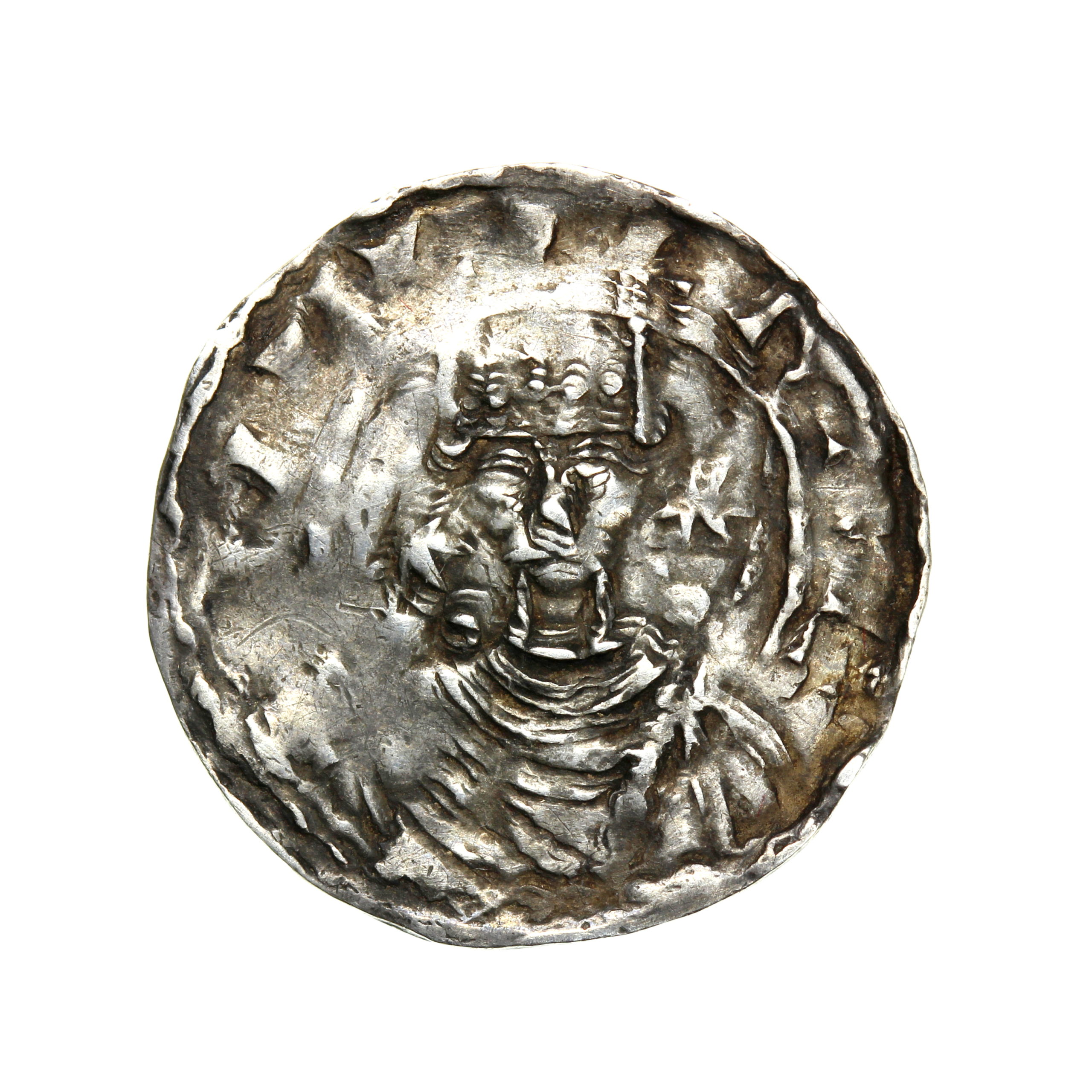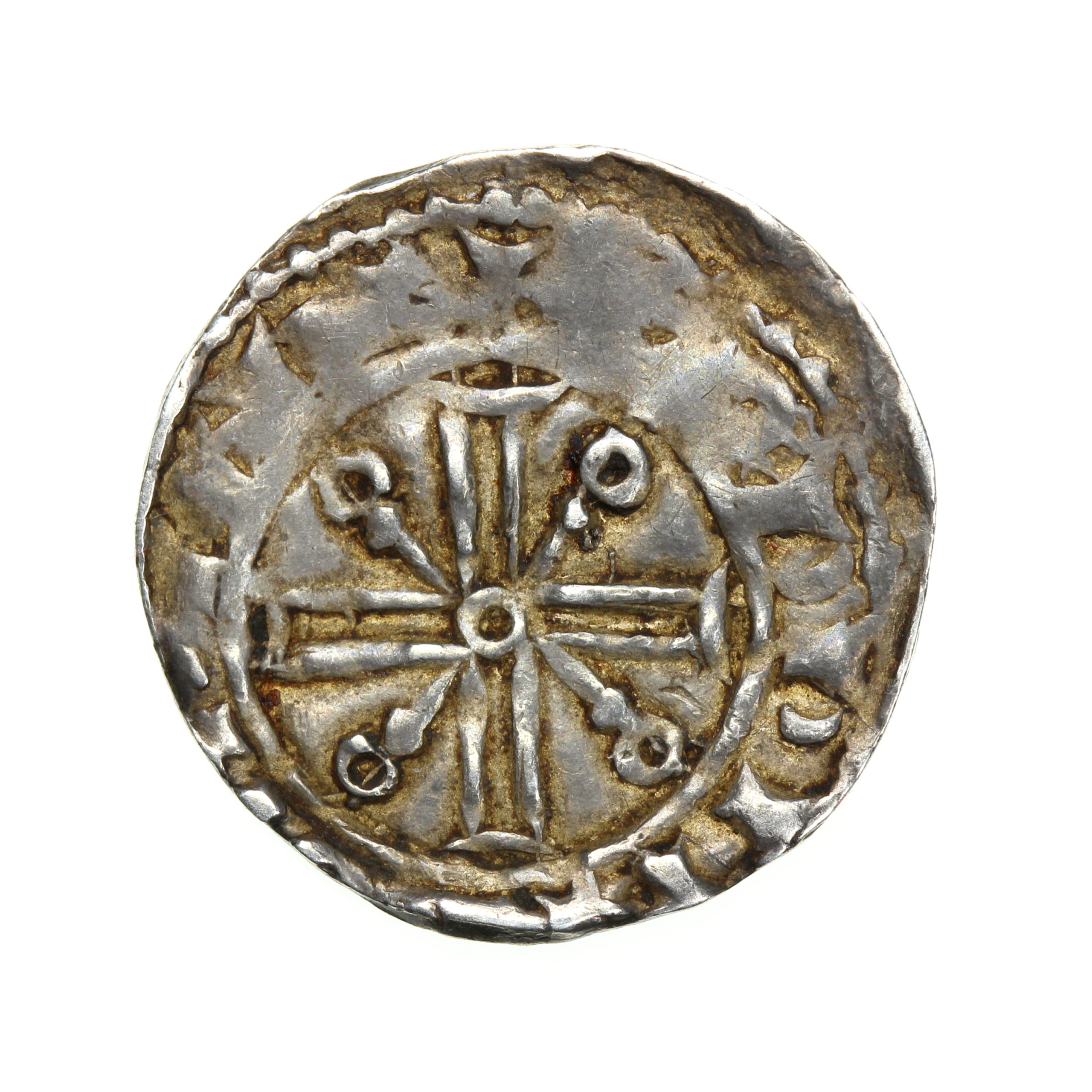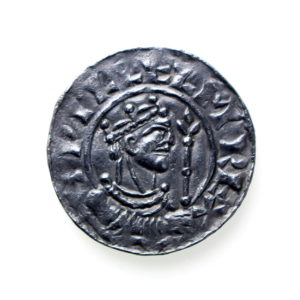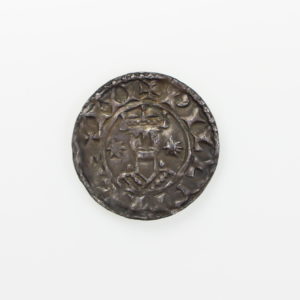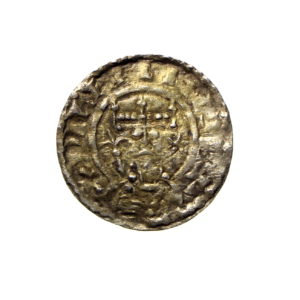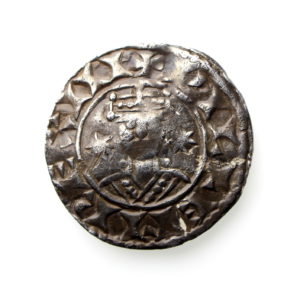William II 1087-1100AD Silver Penny Voided Cross Type Godwine, Winchester
£2,250.00
William II 1087-1100AD Silver Penny Voided Cross Type Godwine, Winchester
S1260, 20mm, 1.37g
This coin comes with an old label written in ink.
William II ‘Rufus’ 1087-1100A.D.
William the Conqueror was father to at least nine children; four sons (Robert, Richard, William, Henry) as well as five or six daughters (Adeliza, Constance, Cecilia, Agatha, Adela and Matilda). On his death in 1087, Robert was left control of Normandy, William the throne of England and Henry the sum of £5000 for the purposes of purchasing his own estates. Richard would die as the result of a hunting accident in c. 1074, and thus inherited nothing from his father.
Known colloquially by the nickname ‘Rufus’ due to his ruddy complexion, William would prove an able ruler. Despite making an initial peace pact with his brother Robert (who at the time of his father’s death was in open rebellion against him), William would face an early challenge to his rule in the English rebellion of 1088. This rising was led by none other William the Conqueror’s half-brother Bishop Odo, acting on in support of Robert himself. Dividing his enemies by promising those nobles that sided with him as much land and coin as they desired, William simultaneously alleviated the concerns of the English populace by cleverly promising sweeping legal reform. Following a lightning campaign against the rebel forces and the capture of Odo at Pevensey Castle, the domestic situation was soon well under control.
William spent much of his reign defending his holdings, both domestic and overseas against other enemies. In 1091 he took the fight across the Channel, crushing Robert’s standing army and forcing him to cede a portion of his lands to William. Robert would never again attack him, choosing instead to mortgage the Duchy of Normandy for 10,000 marks to fund his subsequent participation in the Crusades. Invasions of England by King Malcolm III of Scotland in 1091/1093 respectively resulted in the latter’s death, while Cumberland and Westmoreland were subsequently annexed to Norman control. In 1097, William campaigned in Wales – which resulted in no territorial gains but marked further reinforcement of the so-called ‘Marcher Lords’ through a vigorous programme of fortification.
Such demonstrable martial prowess appears to be reflected in the designs of the coins he struck; through the course of his twelve-year reign William struck five different types of penny, of which three depict him holding a sword. William II’s coins are markedly more scarce than those struck by his father and very rare when compared with his successor Henry I – making them especially desirable to collectors.
Ironically, the most famous part of William’s rule over England concerns his death. Hunting in the New Forest on the 2nd of August 1100, he was fatally shot with an arrow by nobleman Walter Tirel – who promptly fled the scene and went into a self-imposed exile in France. Such an event might be seen as an accident but for the fact that William’s brother Henry galloped off to take control of the royal treasury at Winchester, being crowned King three days later. Some historians suggest that William’s death was a plot contrived by important members of the church, angry at his appropriation of ecclesiastical incomes and meddling with episcopal appointments.
1 in stock

